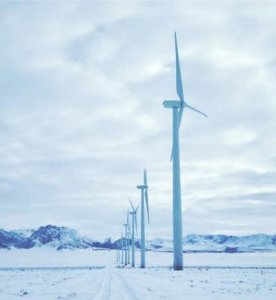A summary of key insights and lessons, in white paper form, from investing in better harsh weather and ice ‘resistant’ turbine technology
Zara Mung
Cold climate and de-icing technologies are improving the business case for wind power in Canada, but icing assessment remains problematic, experts told Wind Energy Update. Compared to some of Canada’s first cold climate wind parks in the 1990s, which were built without de-icing protection, Canada’s most recent wind

Knowing the severity of icing is key to estimating the business case for an ice protection technology.
farms are proving far more resilient thanks to new cold weather and ice protection technologies.
Though most of Canada is located in a cold-climate environment, the incentive to install turbines with built-in deicing technology is especially high in regions exposed to more severe icing, such as the hills in eastern Canada, not least because retrofit deicing technology is so far limited and expensive.
Knowing the severity of icing is key to estimating the business case for an ice protection technology. Icing severity can be assessed either by measuring the meteorological icing – the time during which ice is accumulating on a structure – or by measuring the instrumental icing – the period when ice remains on a structure and affects its performance. The International Energy Agency (IEA) Task 19 categorizes the severity of icing into five classes based on the duration of these types of icing and the resulting production loss.
Read the full white paper here: https://goo.gl/t0cu9T
Filed Under: News




